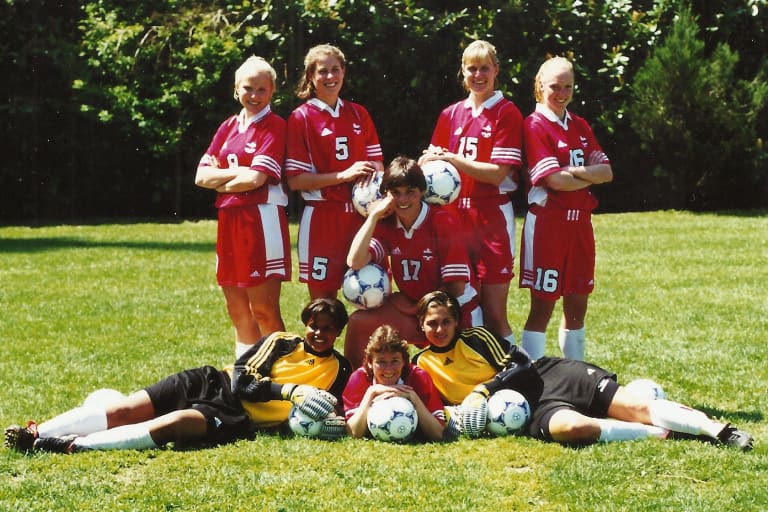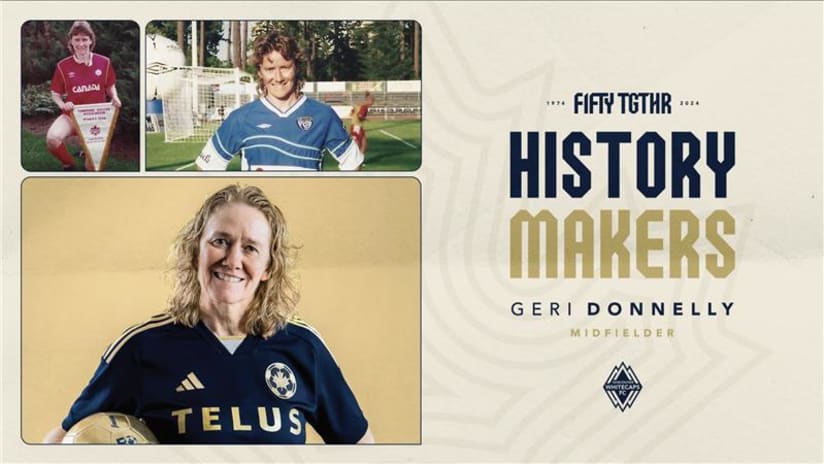Photos provided by the BC Sports Hall of Fame
With how far women’s soccer has come in Canada, it’s quite amazing to look back at how things began.
“I can think back to being a young girl in Langley, probably being about four or five-years-old, and there being only boys teams,” remembers former Whitecaps W-League goalkeeper Michele Gademans.
It was the same for Phebe Trotman.
“That was what was available.”
Perhaps then, it’s not a surprise to hear that just 38 years ago there was no Canadian women’s national team to aspire to either.
But everything has to start somewhere. And this is where it started.
THE PAST
Chapter 1: Humble beginnings
“It’s kind of surreal actually when you look back,” tells Geri Donnelly of her journey. “It’s almost like it was a dream, because not many people know about it. It wasn’t televised, there was maybe a little clip in the paper if you got to the last section of the sports page.”
In the early 80s, there weren’t many opportunities for female players, and not many role models to look up to.
But that didn’t mean that there weren’t great players.
In 1983, a sprite 17-year-old Geri Donnelly eagerly suited up for Team BC at the Western Canada Summer Games.
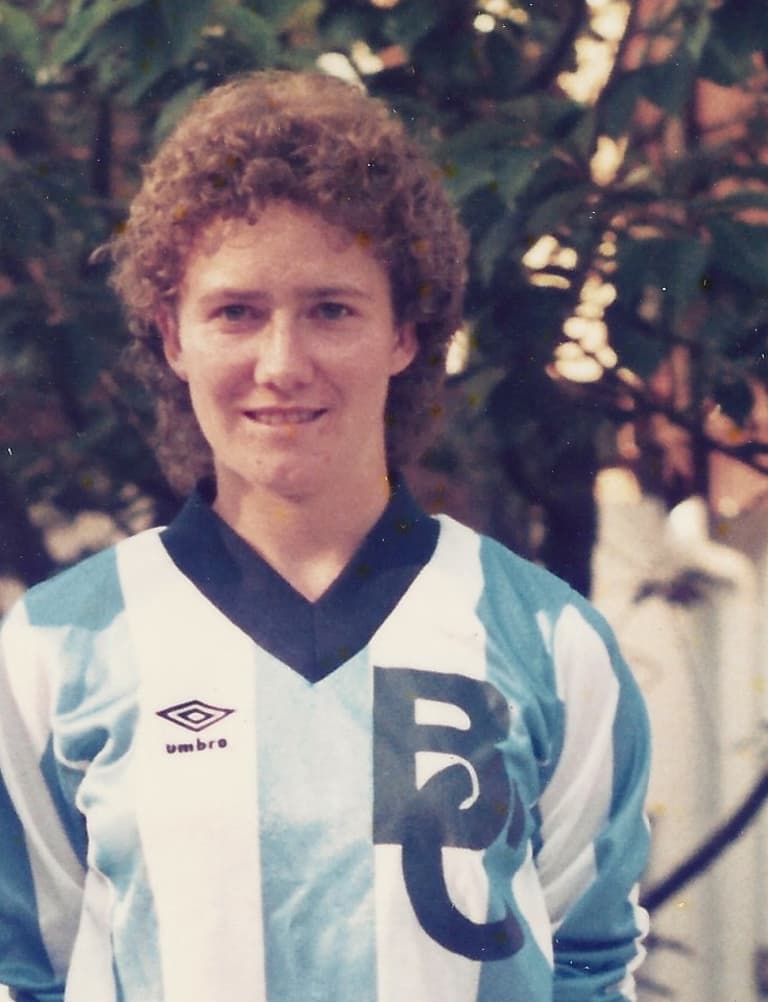
“That was really the biggest tournament that we went to,” tells Donnelly.
She remembers one player in particular that she played with, an older player in her mid-twenties.
“It was Christine Sinclair’s aunt, Sue Gant. She’d played for a long time, and she was a fantastic player, nice on the ball, great technique. I looked at the older players like her on that team. They were my inspiration to try to be like them.”
Chapter 2: The start of Canada’s women’s national team
Little did Donnelly know at that time, that she too would become an inspiration for future generations.
In 1986, while playing for the BC provincial team, news of something new emerged.
The first Canadian women’s national team.
“It was just mentioned at one of the practices that we were going to go to this tournament in Manitoba, and this national team is going to be selected. And that’s all we knew.”
After the tournament finished, 24 players were selected for a three-day camp. From there, they whittled it down to 16 players.
That group immediately traveled by bus to Minnesota to face the United States in two matches.

“We didn’t actually know [what to expect]. We came from all different parts of Canada, different provinces. We had just competed against each other, so we had three days to really train together. The bus ride was actually great so we could chat and get to know each other.”
There they were. Canada’s first women’s national team.
It was exciting, and while the magnitude of the occasion was not necessarily top of mind at the start, it was certainly not lost.
Donnelly remembers the message from head coach Neil Turnbull.
“If we are not successful here, this will be the first and the last time that you ever play for Canada.”
No pressure.
Chapter 3: The start
They lost the first game 2-0.
The lineup changed for the second game, and that’s where Donnelly got her chance.
“It was just a bunch of Canadian women that had a great passion for the game.”
History belonged to Donnelly.
Canada knocked the ball down in midfield, Donnelly played the ball to Charmaine Hooper and made a run into the box. After a perfect pass back, she slotted it into the net.
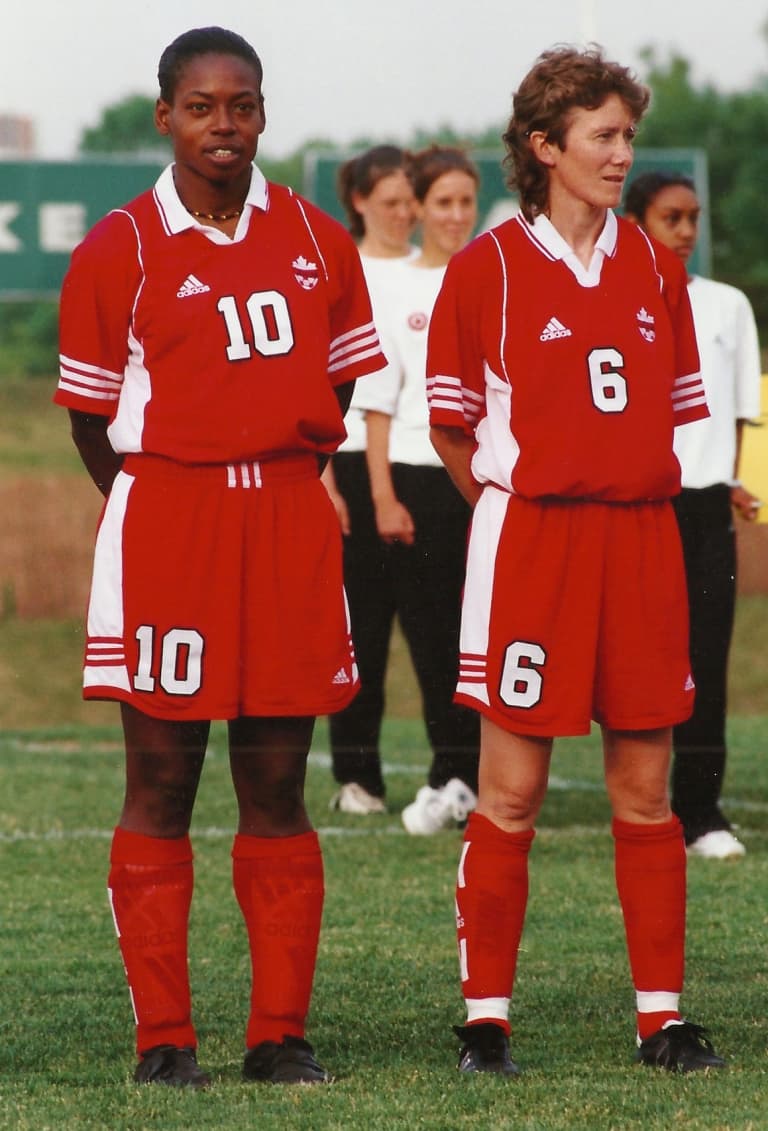
The first goal for Canada.
“It turned out that it was just our grit, and I happened to be in the right place at the right time.”
And then another, Donnelly again.
“Then we defended like crazy,” she remembers. “We hung on for a 2-1 win, which was our first victory ever for Canada. Our goalie, Sue Simon, got the MVP of that game, and there was a reason she got it because she stood on her head. But we also had a real solid defence that mostly played for the Edmonton Angels.”
Nine years later, Canada qualified for their first FIFA Women’s World Cup, the 1995 edition in Sweden.
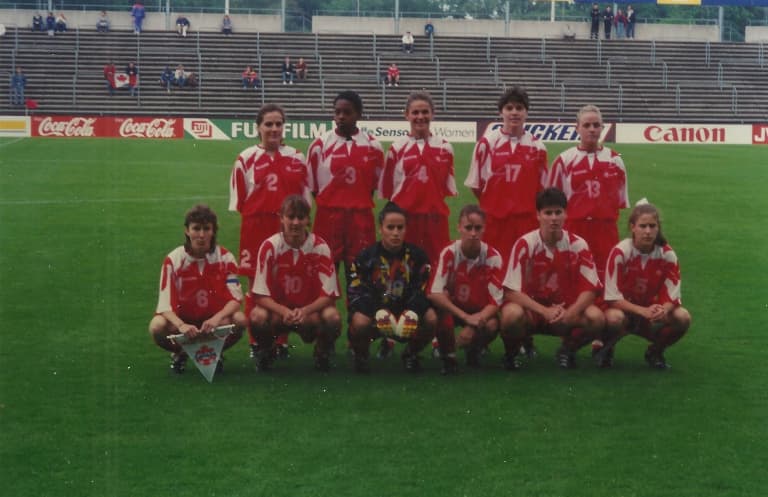
“We were expecting like what we see on TV with the men. It was nothing like that. But the soccer was awesome.”
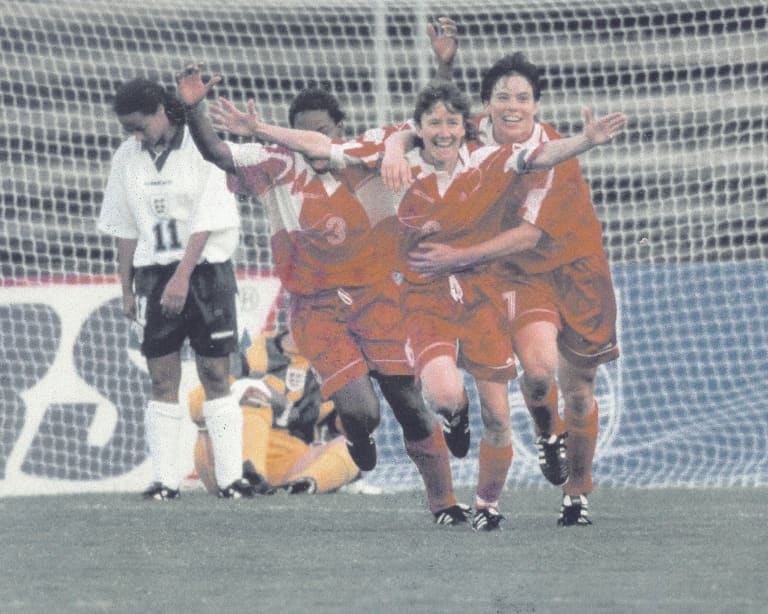
Donnelly scored twice for Canada at that World Cup, against both England and Nigeria, before they were eliminated in the group stage after falling to Norway.
“The games were on tape delay. When we got knocked out of the tournament, we actually got home before our first game was televised.”
Chapter 4: The 1999 World Cup effect
What Donnelly and Canada were expecting to see in 1995 in Sweden, was what they ended up seeing in 1999 in the United States.
“It was on a different level.”
Packed stadiums. TV audiences. Police escorts.
When the United States hosted, and then won, the 1999 FIFA Women’s World Cup, women’s soccer had officially arrived on a global stage.
“It just took off from there.”
And that impact was felt in Vancouver.
“It was exciting times,” remembers Donnelly. “Vancouver had a lot of players on the Canadian national team, it was kind of like the breeding ground. There was a lot of fantastic young players that were coming out of university. Sara Maglio, Randee Hermus, Christine Sinclair. It was an incredible level to be even training at.”
In August 2000, local businessman David Stadnyk purchased the Vancouver 86ers from former owner David Braley. At the same time, he started a new women’s team in the Women’s Premier Soccer League, Vancouver Angels.
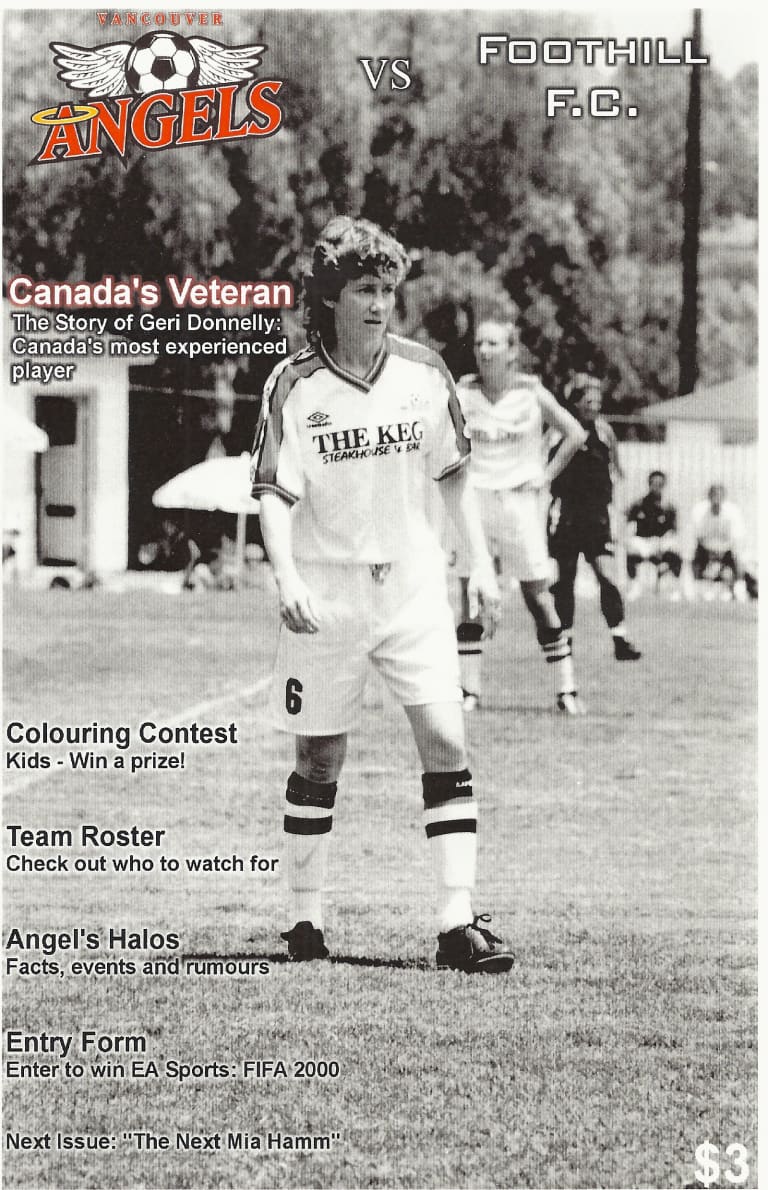
While Donnelly was winding down from the upper echelons of her career, she knew that something was brewing.
“When the Angels started, it was an opportunity for us that had been competing against each other to come together and play together,” tells Donnelly. “That was great, being on your home soil in Vancouver, and getting to play with these incredible players that you knew someday some of them were going to make that next step to the national team level.”
One year later, Stadnyk purchased Vancouver Lady 86ers and merged them together with the Angels to form Vancouver Breakers, moving to the USL W-League and playing home games at Swangard Stadium. Two years later the team took on the Whitecaps FC name.
It wasn’t yet what it could be – what we’re starting to see today at the professional level. But finally, it was a step in the right direction.
“I knew it was just at the tip, it was going to explode.”
Chapter 5: The Swangard Days
Featuring many of Canada’s best players, the Whitecaps FC W-League team was a powerhouse on the pitch.
“We were now playing at Swangard Stadium, moving from Coquitlam [Town Centre],” remembers Donnelly. “We always played before the men’s team. After a while people would start to come earlier and earlier because they saw the calibre of the women’s games.”
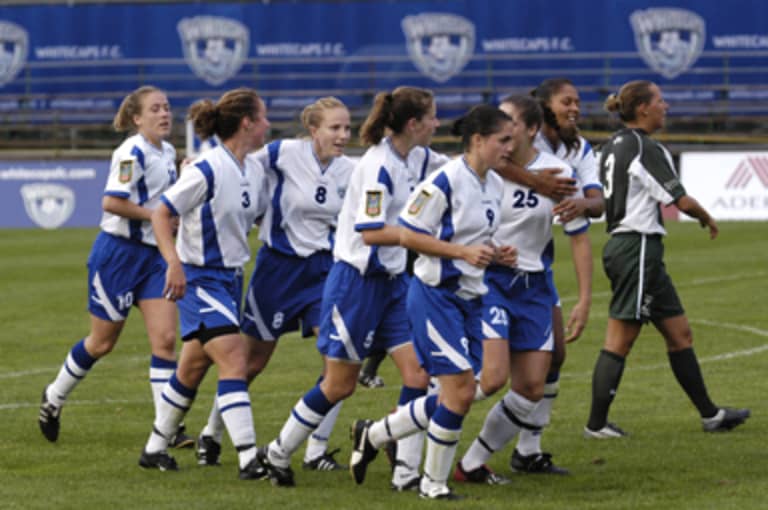
Over a six-year period from 2001 to 2006, the team lost only four games, accumulating a record of 70W-4L-4D, and winning the W-League championship in both 2004 and 2006 while going undefeated.
Strong crowds would come out to watch the team play, inspiring the next generation.
“I was a ball girl growing up and watching those players was inspiring,” tells Gurveen Clair, a future Whitecaps FC W-League goalkeeper. “I just remember the atmosphere and the excitement around it.”
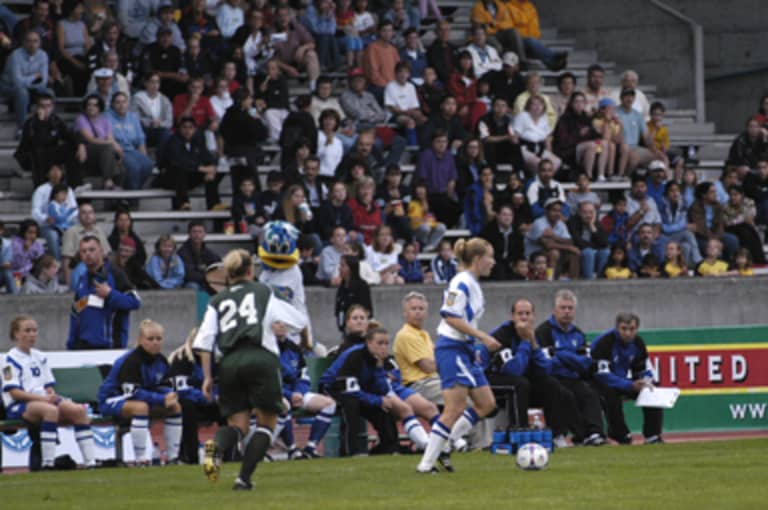
However by 2012, with the W-League stagnating, the team was no longer meeting one of it’s main goals – to provide a competitive platform for players aspiring to Canada’s women’s national team.
The decision was made to shut down the W-League team, and focus on development at the youth level.
THE PRESENT
Chapter 6: Girls Elite
The Whitecaps FC Girls Elite Academy has been chalk full of talented youth players for more than a decade.
Whether it be players like Jasmine Mander – who excelled as a player before becoming an assistant coach to Bev Priestman with Canada’s women’s national team – or later stars like Jordyn Huitema, Julia Grosso, and Jayde Riviere.
It’s a full-time professional development structure that players like Donnelly weren’t afforded.
While player development is the priority, team success has also followed. Last year alone the ‘Caps girls won five different trophies, including a second straight League1 BC title, the League1 Canada title, and even an international championship with the FIFA/Blue Stars Youth Cup in Zurich, Switzerland.
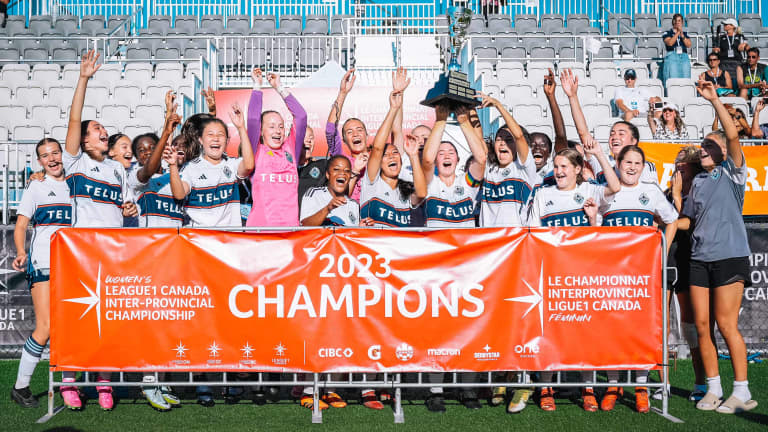
The path to play for Canada has continued, including Jeneva Hernandez Gray who earned a call-up to Canada’s women’s national team as a 17-year-old this past December.
However, there’s been a ceiling to what can be achieved without a domestic professional women’s league in Canada. When players graduate, they have had to look elsewhere for opportunities.
Most go to college. Some have ended up pro in Europe or in the US playing for a team in the National Women's Soccer League (NWSL).
But there have been no professional opportunities to play in Canada.
It’s felt a bit like a step back domestically after all of the progress that Donnelly and her generation fought to achieve in the late 90s and early 2000s.
Now, though, that is about to change.
THE FUTURE
Chapter 7: Project 8
On December 5, 2022 former Canadian women’s national team midfielder Diana Matheson announced that a professional women’s soccer league would be coming to Canada.
In Vancouver, a new team will be led by another Canadian soccer icon in Stephanie Labbé.
“The creation of this league is something we have been advocating for over many years, and to be part of seeing it come to fruition is truly exciting,” said Labbé at the time. “We look forward to working with stakeholders across the Canadian soccer environment to make this league successful.”
And for the alumni of the Breakers and the Whitecaps, it’s something that they’re happy to finally see.
“I am so excited,” smiled Trotman. “This is going to give an opportunity for players to play right here at home. We need it. Vancouver has such incredible soccer fans. Now they’ll have an opportunity to support a team. It’ll be fun to go out to cheer and support and have the community rally around a team.”
“For me it’s more looking back at so many of the women who sacrificed so much for so long, people who put their careers on hold and just played for the joy and love to do something incredible together,” added Sara Maglio. “For me, I get emotional when I look at where the game is now, because of all the ground work that they did to get to this point.”
And it’s that legacy that continues to make each generation stronger.
“When we get together we talk about building on the shoulders of the players that came before us,” tells Donnelly. “We were together for Christine’s farewell, and there were a number of generations of players. It’s just like we’re family. We know what it takes to play at that level, the pressure that you have. So it’s like we’re friends even though we didn’t play together.”
